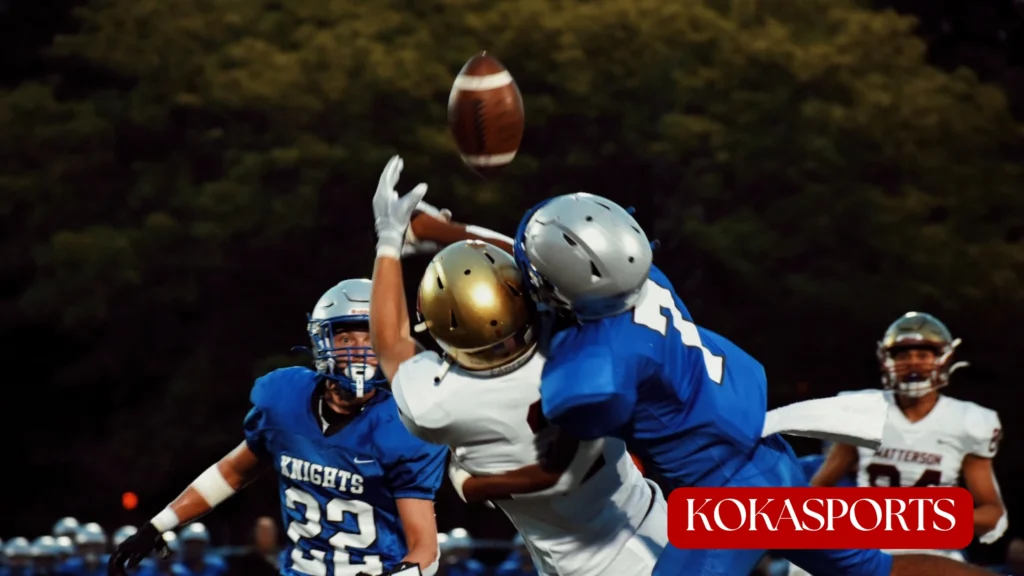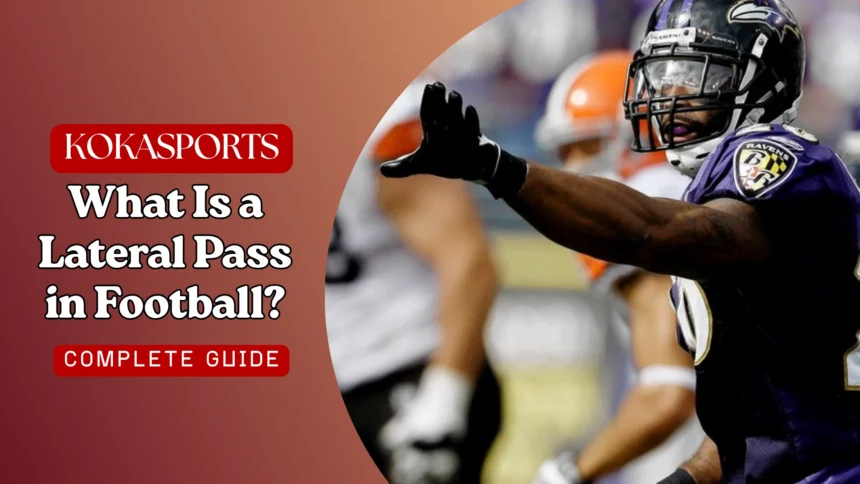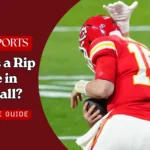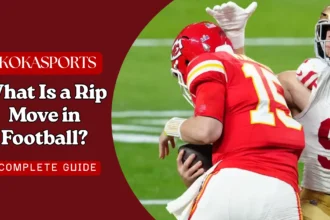Football is a sport filled with exciting moments, strategic plays, and split-second decisions that can change the outcome of any game. Among the various techniques players use on the field, the lateral pass stands out as one of the most thrilling yet risky moves in American football. Whether you’re watching an NFL game or a college football matchup, seeing a successful lateral can send fans into a frenzy, while a failed attempt can be devastating for the team attempting it.
In this comprehensive guide, we’ll break down everything you need to know about the lateral pass in football, from basic definitions to famous plays that have shaped NFL history. We’ll explore the differences between lateral passes and forward passes, examine the rules that govern these plays, and look at how they’re used strategically in modern professional football.
What Is a Lateral Pass in Football?

A lateral pass is a type of pass in American football where the ball carrier throws or hands the ball backward or directly sideways to a teammate. Unlike a forward pass, which moves the ball toward the opponent’s end zone, a lateral travels backwards or parallel to the line of scrimmage. This unique characteristic makes laterals legal at any point during a play, regardless of where the ball is on the field.
Many people refer to this maneuver as a backward pass or backwards pass, and both terms are technically correct. The key element is that the ball must not move forward toward the opponent’s goal line. Picture this: a wide receiver catches the ball near the sideline and, before being tackled, tosses the ball behind them to a running back who has more open field. That underhand or overhand toss is a perfect example of a lateral in action.
The lateral in football can happen anywhere on the field – behind the line of scrimmage, past the line of scrimmage, or even near the end zone. This versatility makes it both exciting and dangerous, as we’ll explore throughout this article.
Read More: Football Stances: Two-Point, Three-Point, and Four-Point Techniques Explained
How Does a Lateral Pass Work in the NFL?
In NFL football, the mechanics of a lateral are straightforward but require precise execution. When a player has possession of the ball and decides to lateral, they must throw the ball to another player either directly sideways or backward. The pass thrown can be delivered in several ways:
- Underhand toss: A common method where the player flips the ball with an upward motion
- Overhand throw: Similar to a forward pass motion but directed backward
- Shovel pass: A short, quick toss typically used near the line of scrimmage
- Pitch: A two-handed toss often used in running plays
Players typically use lateral passes in specific situations. During desperate moments at the last play of the game, teams might attempt multiple laterals to keep the play alive and score a touchdown. The famous “Music City Miracle” is a prime example where the Tennessee Titans used a lateral on a kickoff return in a playoff game, creating one of the most memorable famous plays in football history.
Trick plays also frequently incorporate laterals. The hook and lateral is a designed play where a receiver catches a short pass, then immediately pitches the ball to another player running in a different direction. These plays work best when the defense is caught off guard.
According to NFL pass rules, there’s no limit to how many laterals can occur on a single play. Teams can execute five backward passes or more in sequence, though each additional lateral increases the risk of a fumble or change of possession.
Lateral vs Forward Pass: What’s the Difference?

The distinction between a lateral and a forward pass is critical in football, and referees must make split-second decisions to determine which occurred. Here’s a clear breakdown:
| Feature | Forward Pass | Lateral Pass |
|---|---|---|
| Direction | Toward opponent’s goal line | Backward or sideways |
| Allowed per play | Only one forward pass per play | Unlimited |
| Must originate from | Behind the line of scrimmage | Anywhere on the field |
| If dropped | Incomplete pass (ball is dead) | Live ball/fumble |
| Goes out of bounds | Ball is dead | Ball is dead |
The quarterback typically throws a forward pass, aiming downfield to advance the ball toward a touchdown. This type of pass is heavily regulated – teams can only throw a forward pass once per play, and it must be thrown from behind the line of scrimmage. If a player attempts to throw a forward pass from beyond the line of scrimmage, it’s ruled an illegal forward pass, resulting in a penalty.
A forward lateral is a contradiction in terms but represents a common mistake. When a player intends to throw a lateral but the ball forward progresses even slightly toward the opponent’s goal line, officials may flag it as an illegal pass. This forward or backward determination is often controversial, as cameras from different angles may show different perspectives.
The most significant difference comes when the ball hits the ground. If a forward pass is dropped, it becomes an incomplete pass and the play ends. However, when a lateral pass may hit the ground, it’s considered a live ball, meaning any player can recover it – essentially making it a fumble.
Lateral Pass Rules and Regulations in Football
The rulebook for American football contains specific provisions about laterals that every player and fan should know. Here are the essential rules governing lateral passes:
Legal Lateral Requirements:
- The pass may be thrown at any time during a play
- No restrictions on the number of backward passes allowed
- Can be executed behind the line of scrimmage or past the line of scrimmage
- Both underhand and overhand deliveries are permitted
What Makes a Lateral Illegal:
- If the pass occurred forward (toward opponent’s goal line)
- If the ball travels thrown forward even slightly, it becomes a penalty
- Officials determine legality based on where the ball leaves the passer‘s hands and where it arrives
Critical Rule: Ball Hits the Ground
Unlike a forward pass, when a lateral hits the ground, the ball remains live. This is perhaps the most misunderstood aspect of pass rules in football. Many fans assume a dropped lateral is an incomplete pass, but it’s actually treated as a fumble. Any player from either team can recover the ball and gain possession of the ball.
This rule creates dramatic moments, especially on the last play of close games. Teams attempting desperate lateral sequences risk losing control of the ball if any pass is bobbled or dropped.
Common Mistakes About Laterals

Fans and even some players frequently misunderstand how laterals work in American football. Here are the most common misconceptions:
Myth #1: A Lateral That Hits the Ground Is Incomplete
This is the biggest mistake people make. When watching a game, if you see a lateral pass hit the ground and players diving for it, that’s because it’s a live ball. The play continues until someone recovers the ball or it goes out of bounds.
Myth #2: You Can Only Lateral Behind the Line of Scrimmage
Actually, you can lateral anywhere on the field. Whether you’re at your own 5-yard line or at the opponent’s 5-yard line, lateral passes are always legal if thrown backward or sideways.
Myth #3: Laterals Count Against the One-Pass Rule
In football, teams can only throw a forward pass once per play. However, laterals don’t count toward this limit. A team can throw one forward pass and then execute multiple laterals afterward on the same pass play.
Examples of Costly Mistakes:
The 2003 “River City Relay” game between the New Orleans Saints and Jacksonville Jaguars shows how risky laterals can be. The Saints executed multiple laterals on what appeared to be a miraculous touchdown as time expired. However, they missed the extra point, losing the game anyway. The sequence also showed how easily a lateral attempt can result in a fumble if not executed properly.
Lateral Pass in the NFL vs Canadian Football
While American football and Canadian football share many similarities, their approach to lateral passing differs in practice, though not necessarily in rules. In the Canadian football game, lateral passes appear more frequently due to several factors:
Why Laterals Are More Common in Canadian Football:
- Larger field dimensions (110 yards long, 65 yards wide)
- Only three downs instead of four
- More pre-snap motion allowed
- Wider field creates more space for lateral opportunities
The football league in Canada has historically embraced a more open, fast-paced style reminiscent of rugby, where lateral passing is fundamental. The wider field means more room for players to spread out, making lateral sequences more viable strategically.
In contrast, the NFL sees laterals primarily in desperate situations or designed trick play scenarios. The tighter field and four-down system means teams often prefer to pass the ball forward or run straight ahead rather than risk a lateral that could result in a fumble.
Famous Plays Involving Lateral Passes in Football History
Several legendary moments in American football feature spectacular lateral sequences. These famous plays demonstrate both the excitement and risk of this type of pass:
The Music City Miracle (2000)
In an AFC Wild Card playoff game, the Tennessee Titans trailed the Buffalo Bills 16-15 with 16 seconds remaining. On the kickoff return, tight end Frank Wycheck threw a controversial lateral across the field to Kevin Dyson, who ran for a touchdown. Replays showed the pass was either perfectly lateral or slightly backward – a legal play. This last play of the game sent the Titans to the next round and remains one of the most debated plays in NFL history.
The River City Relay (2003)
With no time remaining and losing 20-13, the New Orleans Saints attempted a series of laterals from their own 25-yard line. After multiple lateral passes and amazing coordination, receiver Michael Lewis reached the end zone for an apparent touchdown. The stadium erupted, but kicker John Carney missed the game-tying extra point, and the Saints lost anyway. This sequence perfectly illustrates the chaotic beauty and ultimate risk of examples of lateral passing.
The Cal-Stanford Game (1982)
Though not NFL football, this college football game produced the most famous lateral play ever. With seconds remaining, Cal executed five laterals, with the ball carrier eventually running through the Stanford band on the field to score. Known as “The Play,” it shows how lateral sequences can create complete chaos.
These moments prove that while teams rarely try to lateral during regular plays, the technique can produce unforgettable football history when executed successfully.
Strategy and Importance of the Lateral Pass in Football
Football coaches must carefully consider when to employ lateral tactics. The strategic value of laterals comes down to risk versus reward:
When Laterals Make Sense:
- Final desperation plays when losing
- Designed plays against aggressive defenses
- Special teams returns when blocking creates space
- Situations where extending the play is more important than protecting possession of the ball
Why Teams Don’t Use Lateral Passes More Often:
Despite their potential, laterals remain relatively rare in the American game for several good reasons. Every lateral introduces the risk of a fumble, potentially giving the opponent excellent field position or even a touchdown. Most football coaches prefer safer plays that maintain control of the ball.
The onside pass concept in rugby shows what American football might look like with more lateral emphasis. In rugby, players constantly pass the ball laterally because forward passing is illegal. The sport flows with continuous lateral movements, much like in rugby culture encourages.
However, in professional football, the forward passing game offers such advantages that teams naturally gravitate toward it. A successful td pass from a quarterback to a receiver can gain 40 yards safely, while a lateral sequence attempting the same distance faces exponentially higher risk with each additional ball to a teammate transfer.
What Happens If a Lateral Pass Goes Wrong?
When a lateral pass may go wrong, the consequences can be severe. Here’s what happens in various failure scenarios:
Scenario 1: Dropped Lateral
If a player drops a lateral, unlike dropping a forward pass, the ball remains live. It’s ruled a fumble, and both teams can recover. If the defense recovers, they gain possession of the ball and can even score if they return it to the end zone.
Scenario 2: Lateral Goes Out of Bounds
When a lateral goes out of bounds, the ball is dead, and the play ends. The team retains possession at the spot where the ball went out, similar to a player being tackled.
Scenario 3: Forward Lateral Penalty
If officials determine a lateral was actually thrown forward, they flag it as an illegal forward pass. This typically results in a five-yard penalty and loss of down, though the exact consequence depends on when and where the infraction occurred.
Scenario 4: Successful Defensive Recovery
Perhaps the worst outcome is when a defense not only recovers a fumbled lateral but returns it for a touchdown. This change of possession and score can instantly swing a game by 14 points – the touchdown your team would have scored plus the one they did score.
The Future of the Lateral Pass in Modern Football
As American football evolves, will we see more lateral usage? Several trends suggest the answer might be yes:
Modern analytics and play design increasingly emphasize creativity and unpredictability. While most plays still focus on forward progress, innovative offensive coordinators experiment with plays incorporating lateral elements. The success of rugby-inspired training methods also brings more lateral consciousness to football.
Special teams units, particularly on kickoff and punt returns, show the most promise for lateral innovation. When a returner is about to be tackled, a quick lateral to a trailing teammate can extend the play with minimal risk.
However, the fundamental risk-reward calculation hasn’t changed. Until someone develops a method to significantly reduce fumble risk during lateral sequences, these plays will remain special occasion tactics rather than regular offensive strategy.
Key Takeaways on Lateral Passes in Football
Let’s recap the essential information about lateral passes:
- A lateral pass moves the ball backward or sideways, never forward
- Teams can execute unlimited laterals on any single play
- When a lateral hits the ground, it’s a live ball/fumble, not an incomplete pass
- Laterals can occur anywhere on the field, unlike forward passes
- The forward pass may only happen once per play behind the line of scrimmage
- Rugby and Canadian football use laterals more frequently than NFL football
- Famous lateral plays like the Music City Miracle show their game-changing potential
- The risk of fumble and change of possession limits regular lateral use
Understanding these rules helps fans appreciate the complexity and excitement when teams attempt these high-risk plays.
Conclusion
The lateral pass in football represents one of the sport’s most exciting and unpredictable elements. While not as common as the forward pass, laterals create moments of pure chaos and brilliance that fans remember for decades. From desperate last play attempts to carefully designed trick plays, the lateral adds a dimension of creativity to American football that connects it to its rugby roots.
Whether you’re watching an NFL game or following your favorite college football team, keep an eye out for those rare lateral moments. They might be risky, but when they work, they produce the kind of unforgettable highlights that remind us why we love this game. The next time you see a player pass the ball backward to a teammate racing toward the end zone, you’ll fully appreciate the skill, timing, and courage required to execute one of football’s most daring plays.
FAQs
How do lateral passes work in football?
A lateral pass is thrown sideways or backward to a teammate and can occur anywhere on the field.
How many lateral passes are allowed in football?
Teams can make unlimited lateral passes during a single play as long as each pass isn’t forward.
What is the lateral rule?
The lateral rule states the ball must travel parallel or backward, not forward, when passed.
What is a lateral in soccer?
In soccer, a lateral refers to sideways movement or passes made across the field.




